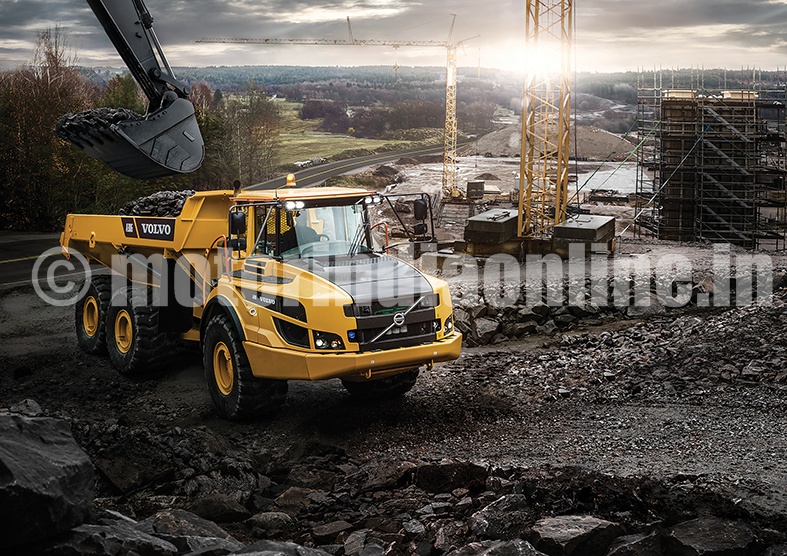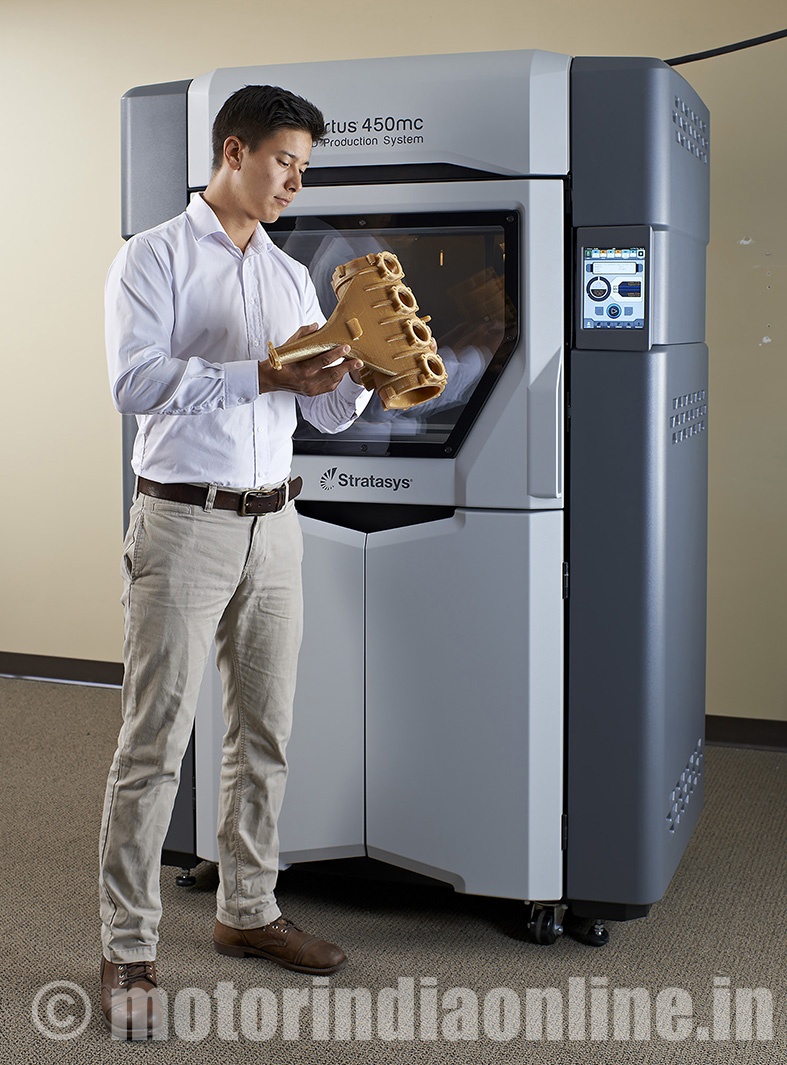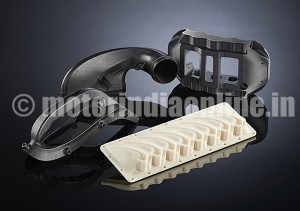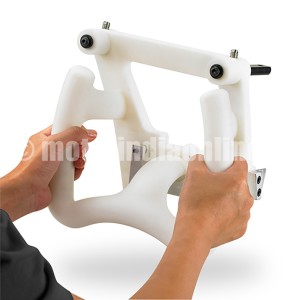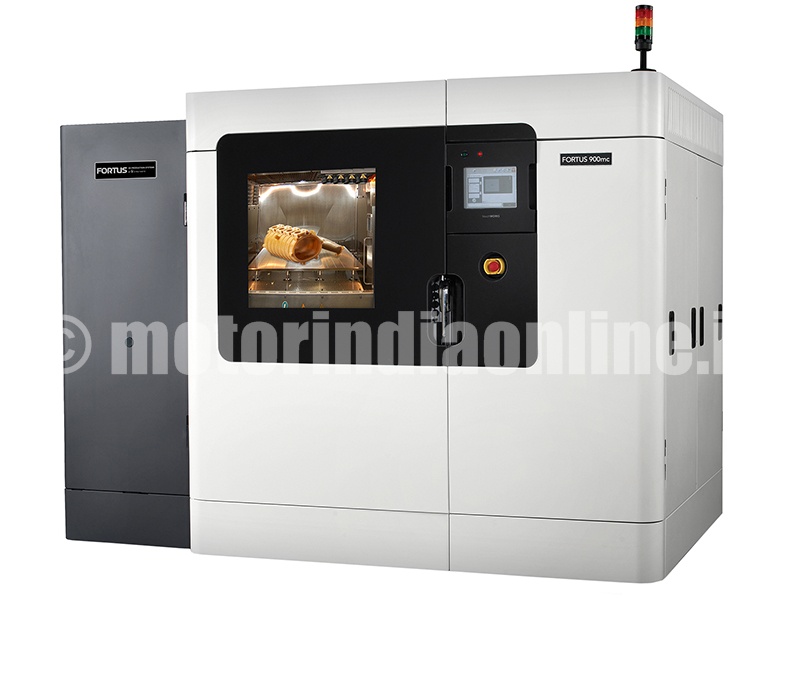3D printing, for making products from digital 3D files, is literally altering the manufacturing landscape of heavy goods industries. As this technology is going mainstream, many constraints and glitches associated with the traditional manufacturing processes are ironed out. The credit for propagating such ground-breaking solutions, goes to niche companies like Stratasys Ltd., a leading global provider of 3D printing and additive manufacturing solutions headquartered in Minneapolis, Minnesota and Rehovot, Israel. Present in India for 15 years through channel partners, the company set up its wholly-owned subsidiary an year back.
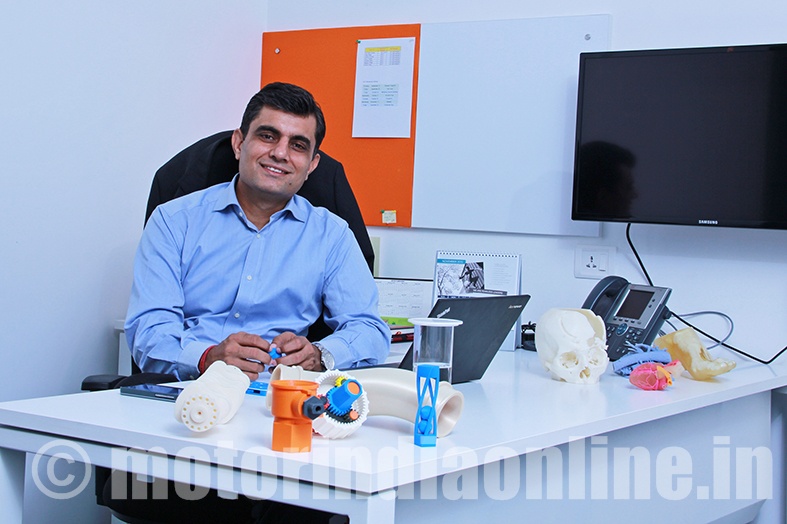
MOTORINDIA recently got an opportunity to interact with Mr. Rajiv Bajaj, General Manager, India, Stratasys AP Ltd., who has over two decades of experience in the CAD/CAM/PLM solution sales expertise and product management. He was quite effusive about the brighter prospects for the automotive sector and hopeful of some good business opportunities from the CV segment.
Edited excerpts of the interview:
Tell us about your presence in India and the industries you are working closely with?
Stratasys is a leading player in the 3D printing space, and with innovative technologies and solutions we are expanding our reach across various industries in India. We set up our Indian corporate office at Ulsoor in Bangalore last year, which runs an in-house Experience Centre facility equipped with the latest technologies and 3D printing solutions that showcases our full product portfolio ranging from desktop 3D printers to advanced 3D production systems, as well as a matrix of specially engineered 3D printing materials. We hold around 800 granted or pending additive manufacturing patents globally, and utilize our Fused Deposition Modelling (FDM) and PolyJet technologies to help produce prototypes and manufactured goods directly from 3D CAD files or other 3D content. Such patented technologies are showcased at the Experience Centre.
The centre, for which we have invested substantially for setting up machines, aims at demystifying the technology and making it accessible to local manufacturers, so that they can come here, see what the 3D printed product would look like and understand in what way the technology can benefit them.
Stratasys remains committed to offering targeted solutions and expertise to customers from various industries such as automotive, aerospace, consumer goods, education, medical, defence, etc. Our prime product lines include Idea Series, Design Series and Production Series, supporting businesses to expedite their manufacturing process from the initial concept stage to production stage. We are also constantly working with different local and international companies to educate the benefits and promote the adoption of 3D printing in the manufacturing sector.
How are you able to leverage on the ‘Make in India’ initiative by Prime Minister Modi? Are you also encouraged to locally build your products here?
Stratasys has always been at the forefront of the global 3D printing market. For instance, manufacturing applications, including jigs & fixtures, end-use parts, injection molding and sand-casting are well suited for the Indian market. The ‘Make in India’ movement provides us a good platform to further push 3D printing forward in the different industries we are working with. As the Government proposes to enhance the share of manufacturing in GDP and to create smart and sustainable cities where manufacturing will be the key economic driver, we believe local businesses will be very proactive in embracing 3D printing technology. We are keen to collaborate with companies to accelerate their go-to-market plans with the aid of 3D printing solutions and applications. Currently, our machines are manufactured in the US and Israel.
Are your products customized for the Indian market?
Our systems include 3D printers for idea development, prototyping and direct digital manufacturing that cater to multiple markets and businesses across different functions and applications. For instance, 3D printing can be applied in low-volume high-mix production of parts in automotive and aerospace industries, whilst the industrial machinery sectors make use of 3D printing in injection molding or sand casting for pilot run prior to mass production. All these applications optimize designs and accelerate the production cycle, and subsequently maximize ROI through a more cost-effective approach for our customers.
Tell us about your contribution to the domestic and global automotive industry? What is the suite of solutions that you are offering for this industry?
The automotive industry is one of the biggest adopters of 3D printing technology globally with some of the marquee brands like BMW, Daihatsu, Ashok Leyland, Volvo (Trucks), etc., using our solutions in their mainstream product development processes. They have managed to cut down lead time substantially, apart from trimming down the weight of their products by 60-80%. As a result, they (OEMs) have come up with products which are future-oriented and economical and are appealing to their end customers. The adoption trend is similar in India as customers from the automotive sector contribute heavily to our business in the region. This industry has always been at the forefront of incorporating next-generation technologies and is always innovative in its approach. So if you see the acceptance levels, the automotive industry has adopted our technology in the best possible manner and the process is in an advanced stage. I would say this is true of our Indian OEMs and their Tier-I suppliers. Of late, some Tier-II suppliers are also considering it very closely.
What is the potential that you see in the CV industry?
One of the classic examples of our partnership in the global CV space is our association with Volvo Trucks in Sweden. They are using our products in many areas like design and conceptualizing, color-coded fixtures, tooling 3D printed using digital materials and cut down their production cycle time by up to 90%. They are both real-life examples among many other stories that make use of our solutions to design and manufacture. Of late, we are witnessing a lot of interest from CV players because of the uptick in (vehicles’) volumes, opening up of the mining sector, heavy boost in the infrastructure sector, etc. Many commercial vehicle manufacturers can incorporate innovative designs and functionality in their products even while cutting down both operational costs and time to market.
Do you think 3D printing will supplant conventional printing methodologies in the long run?
That is a very good question. A lot of people confuse 3D printing with Conventional Manufacturing. These are two separate streams of manufacturing which complement each other. There is no comparison between them because 3D printing is meant for specialized manufacturing of low-volume parts, customized jigs and fixtures, and efficient and accurate prototyping, whereas the conventional printing or fabrication methods are meant for mass manufacturing of high-volume parts. It involves real, usable, physical end-products being made electronically rather than by traditional processes. Smart manufacturing of the future would have 3D and conventional printing processes co-existing with each other and grow the scope of each other’s applications. We are actually fuelling innovation by enabling companies to test ideas in a cost-efficient manner and creating thousands of skilled jobs.
How critical is the Indian market for you? How big are you betting on it?
Asia Pacific is one of the four core regions for Stratasys globally, and India is one of our key sub-regions in Asia. Awareness of 3D printing is on the rise in India and we intend to capture as much potential as possible by offering advanced technological platforms, solutions and applications. We are investing very heavily for the Indian market through our local team and channel partners. In addition, we are doing a lot of evangelism like participating in various industry forums and hosting vertical seminars to demonstrate the limitless capabilities of 3D printing to entrepreneurs, manufacturers and local company owners. With awareness of 3D printing constantly rising in India, we look forward to more companies joining us to further push the boundaries of 3D printing.
